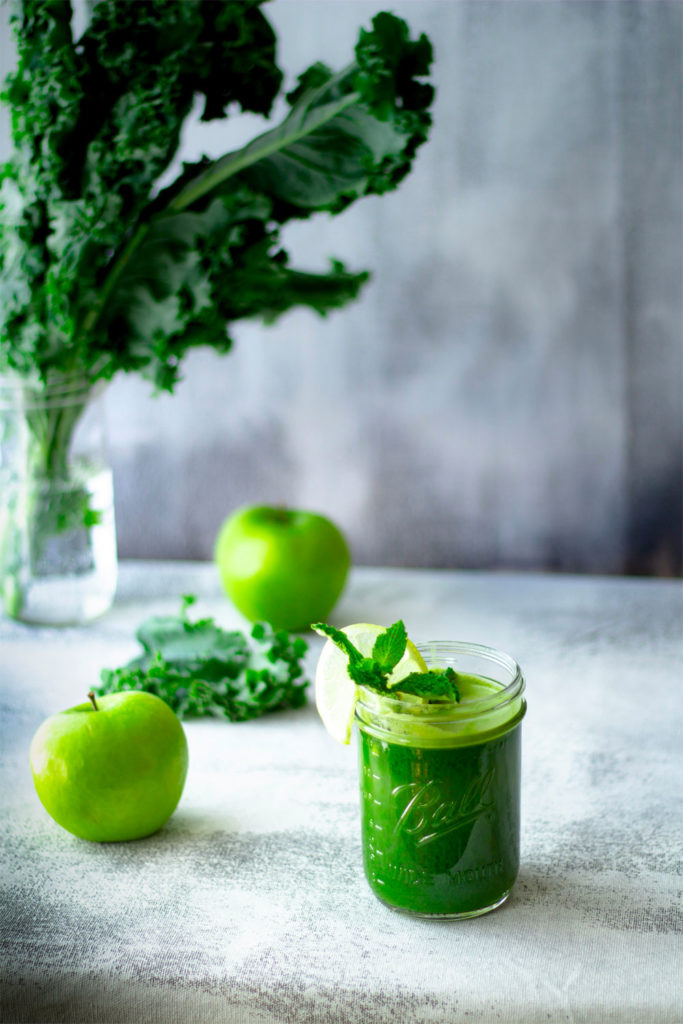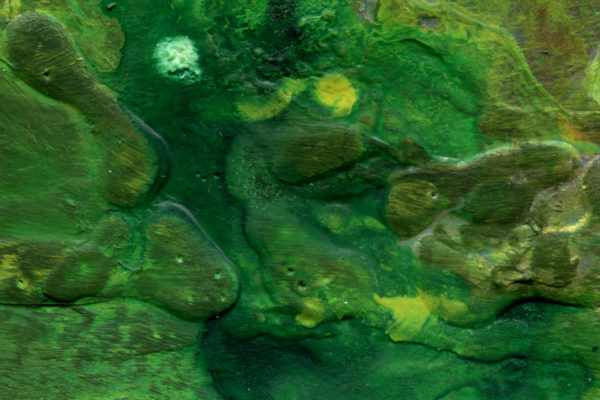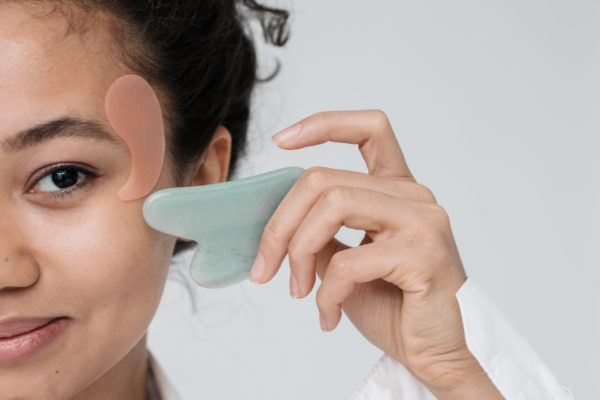How To Tell If You Have A Healthy Skin Microbiome
By
1 year ago
How looking after your microbiome can get your glowing skin
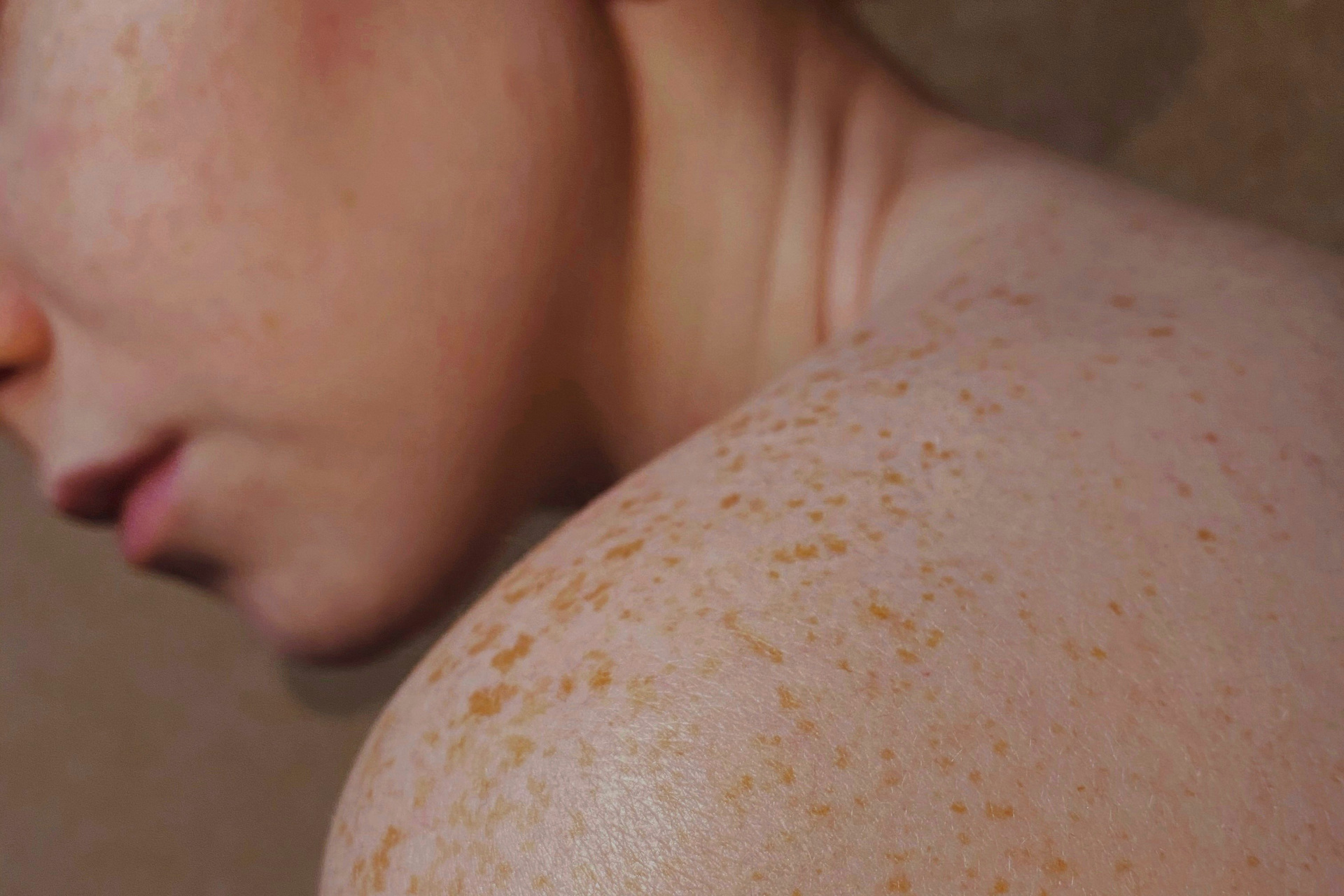
Suspecting something’s up with your skin? If skincare products and treatments just aren’t cutting it anymore, it might be time to look a little deeper. Here’s how you can get in touch with your skin microbiome – and make it work to your advantage.
What Is The Skin Microbiome?
The skin microbiome is the name given to the diverse community of microorganisms (which includes bacteria, fungi and viruses) that live on and in the layers of our skin. It’s a similar concept to the gut microbiome, says nutritionist Michaella Mazzoni. ‘While many of us are familiar with the gut microbiome – the bacteria that lives in your digestive system – it’s also important to remember that you have microbiomes all over, and that there is another important microbiome that exists on your skin,’ she tells us. ‘Beyond your appearance, your skin (and its microbiome) is your body’s first line of defence. Primarily, it helps prevent harmful microorganisms from entering your body, making it hugely important when it comes to your protecting your immune system.’

(c) Jernej Graj, Unsplash
Why Is It So Important?
It’s thought that your skin microbiome is as unique as a fingerprint – meaning it might work slightly differently from person to person – and remains in constant communication with its surrounding environment as well as the skin itself. As Michaella highlighted, the skin microbiome functions as a line of defence against external factors (like pathogens) that could compromise our health while also helping control skin immunity– but it also plays a vital role in nutrient absorption and supporting the skin barrier. So it’s a pretty important part of your body to look after when it comes to your overall health.
Is Your Skin Microbiome The Same Thing As Your Skin Barrier?
No, the two are in fact different. Where your skin barrier refers to the body’s outermost surface, which acts as a protective shield against environmental factors, the skin microbiome is the term given to the microorganisms that reside on the skin’s surface, which protect the body on a physical, chemical and immunological level. The skin microbiome also helps to support skin barrier health.
What Are The Signs Of A Damaged Or Unhealthy Skin Microbiome?
If your skin microbiome is unhealthy – usually as a result of some kind of imbalance – it will tell you in the form of flaring skin conditions like acne, eczema, rosacea, psoriasis and sensitivity, as well as accelerated signs of aging such as loss of elasticity, uneven tone and wrinkles. As well as the above, there are some signs you can look out for if you suspect you might have an unbalanced skin microbiome. These include:
- Itchy skin or rashes
- Dry, dehydrated or flaky skin
- Slow wound healing
- Rosacea, eczema or acne
- Redness
- Uneven skin texture
@joyoushealth 6 signs your skin microbiome needs help! #gutmicrobiome #skinmicrobiome #healthyskin #glowingskin #acne #rosacea #holisticnutrition #holisticnutritionis ♬ original sound – Joy McCarthy
What Makes A Healthy Skin Microbiome?
Typically speaking, your skin microbiome will tell you it’s healthy or unhealthy. ‘I like to think of skin as a two-way messaging system,’ says Michaella. ‘What’s happening on the skin is a way of your body communicating what is happening internally – rashes when you’re feeling stressed, breakouts when you’re sensitive to certain food – and what you put on your skin communicates internally.’
Balance
‘Ultimately, a healthy skin microbiome is diverse and well balanced,’ explains Michaella. A balanced skin microbiome is the best indicator of its health, but can easily become influence by things like skincare routines, environmental factors and hormonal changes. It’s when things become unbalanced, a state known as ‘dybiosis’, that problems start to occur on the skin.
Diversity
Another thing needed for a healthy skin microbiome is a diversity of bacteria, fungi and viruses. When they coexist harmoniously they can function at their best, acting as an effective biodynamic shield that can trap moisture in and keep irritants out. When one strains starts to overgrow it can cause dysbiosis; an imbalance can lead to skin issues like inflammation or delayed healing of existing conditions.
Gentle Ingredients
Chemicals also play a role in dysbiosis. ‘The ideal skin PH is 5, and this helps the microbiome to thrive,’ says Michaella. ‘Some products, like hand soap and sanitisers, have harsh chemicals which can alter the balance of the microbiome by reducing the number and diversity of certain microbes on the skin. In this case, an unbalanced skin microbiome usually presents as redness, small breakouts and sensitivities.’ When dealing with chemical imbalances, Michaella advises using ‘face wash, moisturisers and other skincare which doesn’t have harsh chemicals, as well as products with prebiotics which feed the microbiome on your skin.’
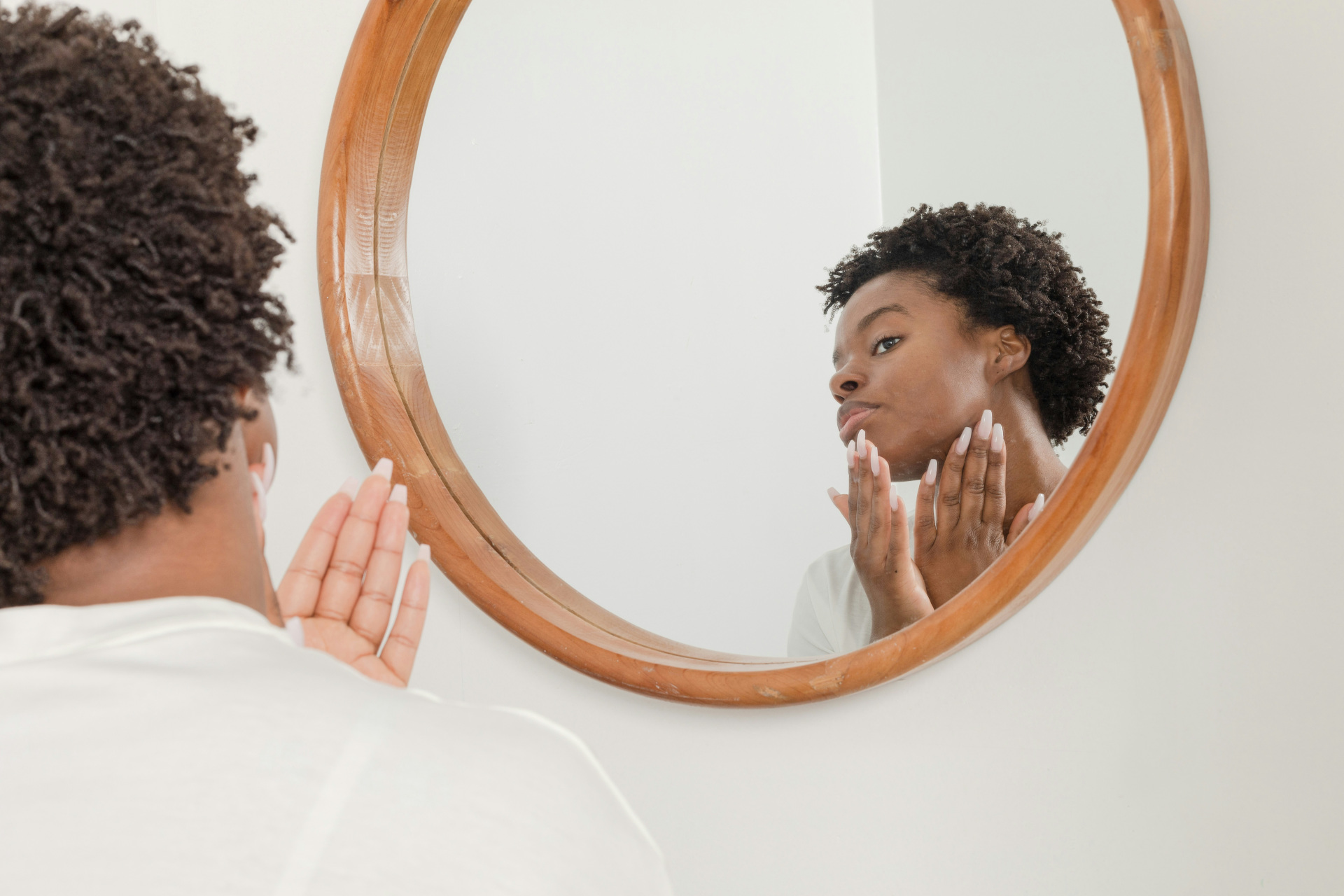
(c) Curology, Unsplash
Skin Barrier Health
Skin barrier health similarly impact the skin microbiome. As the he body’s first line of defence against environmental factors, it acts a bit like a shield – and when it gets damaged, it can impact the diversity and abundance of microorganisms in the skin microbiome.
Balanced Diet
‘More and more research is coming through suggesting a link between the gut and skin, sometimes called the “gut skin axis”,’ Michaella explans. ‘For example, people with skin conditions like rosacea and eczema appear to have quite a difference in their gut microbiome to those without. This suggests that skin starts from the inside, and working on your gut health is important. A good starting point is to increase your intake of prebiotic foods like oats, garlic, onions and leeks as well as probiotic foods such as sauerkraut and kimchi, and trying to identify food allergies or sensitivities.’
Hormonal Health
As well as your gut, your skin takes its cues from your hormones – and when you experience a hormonal imbalance this can show up on the skin microbiome. Hormones play a crucial role in regulating various functions of the skin, including sebum production, pH balance, and immune responses, and fluctuations are thought to disrupt the delicate balance of the skin microbiome (including its diversity and abundance). This can lead to conditions like dryness, atrophy, fine wrinkling and poor wound healing. Hormonal fluctuation is common as you get older, but can also be caused by the products you use. ‘Common skincare ingredients like phthalates and parabens have been shown to interfere with the balance of hormones by binding to oestrogen receptors,’ highlights Michella. ‘This could become significant if you are using products containing these ingredients everyday.’
Skincare: What To Do & What To Avoid
As Michaella outlined for us, the approach to skincare you should take when it comes to nurturing your skin microbiome should be gentle and simple. Try to avoid harsh chemicals that mess with the pH of your skin and damage its microorganisms, or strip the skin of its natural oils and denature proteins, and instead opt for a streamlined skincare routine that focuses on hydrating the skin (we recommend these moisturisers here). You can also use ingredients that are known for nourishing the skin barrier, like aloe, jojoba oil, shea butter and squalane oil, as these will help fortify the skin’s overall health.
To summarise:
DO
- Simple skincare
- Nourishing ingredients
- Moisturise and hydrate
- Pre-, pro- and post-biotics
AVOID
- Harsh chemicals
- Lengthy skincare routines
- Hormone disruptors
Featured image: Valeria Smirnova, Unsplash




